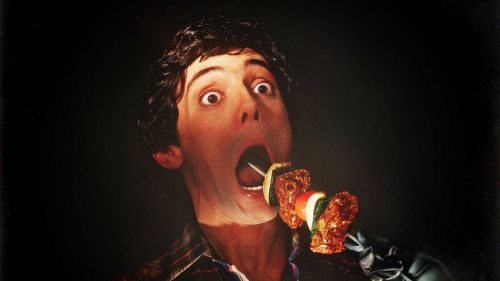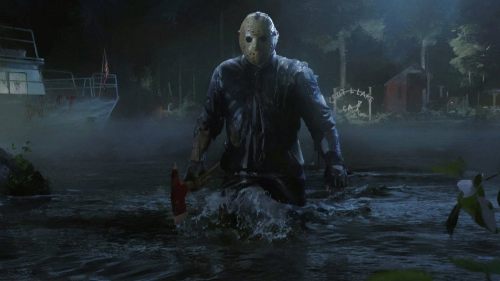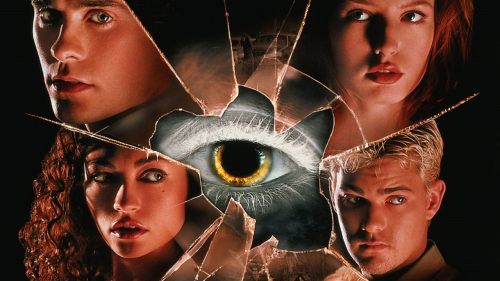Between HALLOWEEN And NIGHTMARE ON ELM STREET: The Insanity Of THE MUTILATOR
It's been said that there wasn't a single week in 1981 where there wasn't a slasher film playing in theaters, and while the largely independent, regional rollout nature of many of those releases makes that hard to verify today, I certainly don't doubt it. After being primed by Halloween, the success of 1980's Friday the 13th proved how "easy" and cheap it was to make these movies, and soon Hollywood and independent producers alike were scrambling to get their own in theaters. That's why if you were to rattle off the slashers you remember (not counting sequels) off the top of your head, a hefty majority will be from 1981: Happy Birthday To Me, My Bloody Valentine, The Burning, The Prowler, Final Exam, The Funhouse... you can (should?) go on. The trend slowed down for the following two years, and after Tri-Star's Silent Night, Deadly Night debacle in 1984 (already long past the sub-genre's heyday), Hollywood all but completely lost interest, save for Paramount and their ongoing Friday the 13th series.
The success of Nightmare On Elm Street in late 1984 could have inspired a resurgence, but it wasn't the diced up teens that hooked audiences. Instead, the unusual effects and imaginative concept of a killer who stalks through your dreams captured crowds, and so the second half of the decade was loaded with FX-driven, ultimately bigger budgeted movies, with very little attention paid to simple "a guy in a mask kills people" fare. Audiences wanted more, and that's what they got, which was a real issue for the independent outfits that were banking on not having to spend a lot of money on big creature FX. While there's very little difference in the acting talent or filmmaking prowess from the $60,000 Final Exam to the same year's million dollar budgeted Friday the 13th Part 2, you can't really do The Fly or The Lost Boys with a five figure budget without being laughed out of the room. And so these indie producers had little choice but to keep on making slasher movies for equally small scale distributors, mainly for the booming VHS market. For slasher fans like myself, this period is a goldmine, chock-full of very odd entries in the slice n' dice sub-genre. These movies weren't competing with the studios anymore, and whether that informed their filmmakers' seemingly bizarre choices or it was just a coincidence, I don't know. But either way, there are some prize gems in that era (1984-1987, roughly), if you’re willing to skip past the titles you recognize and look deeper.
One particular favorite is The Mutilator, which was originally released with the far more innocuous title of Fall Break, but changed for home video; it seems someone thought The Mutilator would catch more eyeballs. But the original moniker hasn't gone to waste, as it's still represented in the film, and gloriously so. Ill-fitting as it may be, the opening credits (which begin 10 minutes into the film) are set to, yes, "Fall Break," a very upbeat, painfully earnest pop tune about what the kids are doing: going on a fun trip, enjoying life, being young, all that good stuff. It sounds absolutely nothing like a horror movie theme, but that doesn't stop writer/director/producer Buddy Cooper from playing it again during the closing credits, over outtakes for the cast (some from their own death scenes) and the not-terribly-surprising reveal that Cooper was also one of the musicians on the song. When you think of ‘80s horror movie theme songs you'll probably hum a few bars from "Killer Klowns from Outer Space" or The Ramones' "Pet Sematary," songs that you obviously won't mistake for anything but horror movie themes. "Fall Break," on the other hand, could have played on AM gold radio for years without anyone realizing its origins.
But the unusual song choice is hardly the only weird thing about the movie, or even the first. We know we're in "off" territory almost instantly, when the obligatory tragic prologue features a kid accidentally shooting his mother dead while cleaning his father's guns as a birthday gift (beats a tie, I guess?). But it's the father's reaction that sends it skyrocketing to WTF territory, as he comes home, sees his wife lying dead on the kitchen floor, and proceeds to slap his son around as if he had just broken a window or something. Then he drags the wife's body to the couch, fixes himself a drink, and places the kid's birthday card on her corpse. His instant lack of compassion for his son is extraordinary, made weirder by the notion that they actually keep in touch! We flash forward ten years later to a local hangout, where the now grown up kid is enjoying beers with his pals when he gets a phone call from his dad, who orders him to go up to their beach condo and clean it up for the winter. Based on the only interaction we've seen between them, you'd assume they'd never speak to each other again, but apparently they're so close that the dad knows when he can reach him at the local dive.
And its gonzo moments continue throughout the runtime, to the point where it's almost disappointing when Cooper focuses on traditional stalk n' slash sequences. There's a scene where we learn that the father has kept a framed photo of someone that he ran over with his boat (keep in mind, none of them are aware he is the one killing them; even the son is surprised), and the movie stops cold to include a goofy bit where the people who own the obligatory gas station store have set up a fake senior discount. There's also a delightful scene where a man triumphantly laughs about a victory over his antagonist... despite the fact that he has been cut in half at the waist. You just don't get cinematic gold like that in the studio-produced slashers, and to me they're the poorer for it.
There are some other gems in this era, like Blood Rage (a rare Thanksgiving-set slasher), the even more batshit Killer Party (which throws several sub-genres into the mix, including Exorcist-style possession) and Splatter University, which is actually fairly boring but uniquely crass enough to warrant inclusion. Even the really bad ones are memorable, like Shadows Run Black, a 1986 release that mixes slasher motifs with a police procedural, and features Kevin Costner (!) as one of the suspects. For years, it's likely you would never have ever even heard of these films unless you saw them in your video store, as even the likes of Fangoria couldn't keep up with them as there were so many bigger films out there (let's face it - Cronenberg's The Fly on the cover is more likely to trigger a purchase than Mountaintop Motel Massacre). Thankfully, the internet revived interest in these obscuros, with some -- like The Mutilator -- hitting Blu-ray after bypassing the DVD era entirely (at least here in the US; it's been released in questionable form overseas). The independent, small-scale releases of these movies is the reason that many are so hard to track down and restore today, as the rights are often split among several parties and corporations that have long since dissipated, or the negatives lost entirely -- The Mutilator is one of the lucky ones.
There's something I find quite endearing about this mini-era of slasher films. Without any major competition (and all of the holidays used up), they're often a lot goofier than the average body count flick, with the personality shining through not so much in the kill scenes but the moments surrounding them. Had I seen The Mutilator back in 1985 when it was theatrically released, I too may have found little to like about it then -- it was not up to slasher "standards" (the body count far lower than the recent Friday films) and it wasn't giving me the imagination and expensive thrills I could see in the same year's Fright Night or Lifeforce. At the time it must have been tough for films like this to find any audience even if they did manage to get a theatrical release, stuck in between two eras and lacking a big enough hook (no pun intended) to stake any territory of its own. Their offbeat nature may not have been appreciated at the time, but it's that very thing that makes them so fun to discover today.
Originally published in the October issue of Birth.Movies.Death. magazine. See The Mutilator at the Alamo Drafthouse this month!



